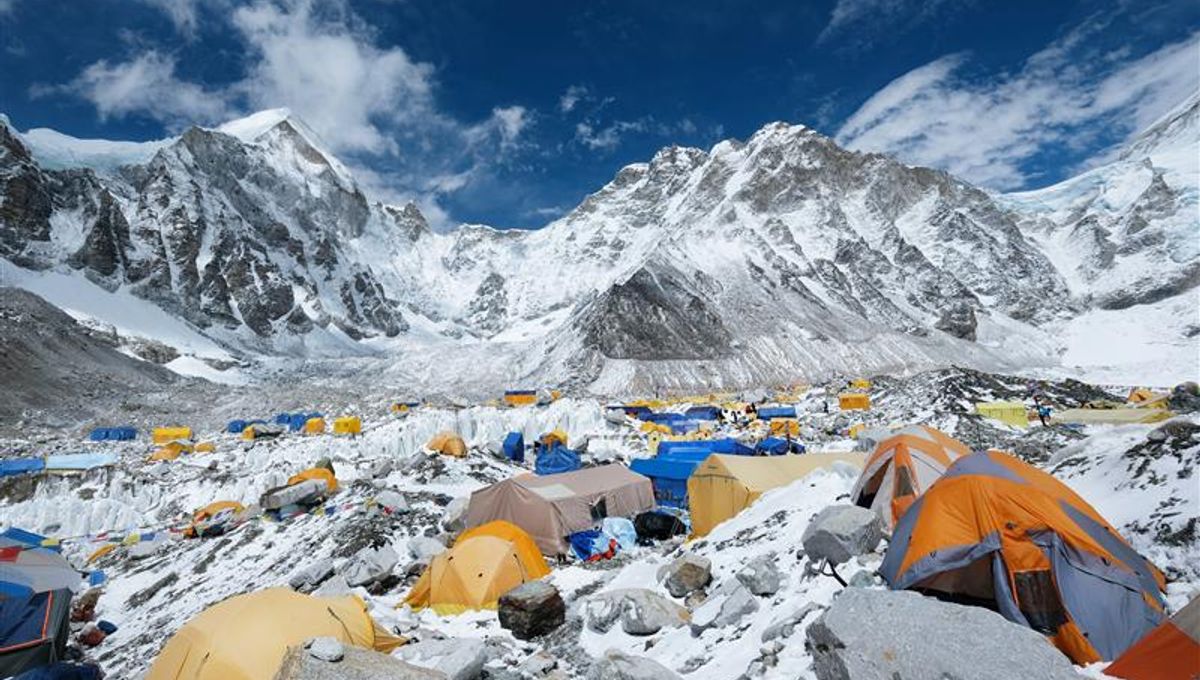
Mount Everest has received its first ever drone delivery in a proof-of-concept test conducted in April this year. The incredible achievement was a first of its kind mission to use drones to deliver supplies to mountaineers.
The delivery was conducted by the technology company, DJI, in collaboration with Nepalese Airlift, the video production company 8KRAW, and local guides. The drone itself was a FlyCart 30, a long-distance heavy lifter with a maximum carrying capacity of 15 kilograms (33 pounds).
This drone is designed to deliver its packages to less conventional locations; as DJI say, it can ascend “beyond traditional logistical limits”.
This claim was certainly put to the test on Mount Everest (Mount Qomolangma) where it was expected to carry its load to remarkably high altitudes and in extreme conditions.
In this test, the drone had to carry three oxygen bottles and 1.5 kilograms (3.30 pounds) from the Everest Base Camp to Camp 1, and then return with waste.
The Base Camps on Everest, which sits at 5,300 meters (17,389 feet) above sea level, provides those planning to ascend the mountain with a point to rest and to recover from the perils of high altitude. This is because at heights between 5,400 and 5,800 meters (18,000 to 19,000 feet), the human body starts to decay, so prolonged exposure to altitudes above this can quickly become fatal.
This is bad hard enough, but those who try to climb from Base Camp to Camp 1, which sits at 6,000 meters (19,685 feet) above sea level, have to contend with the Khumbu Icefall, which is one of the more perilous stages of the ascent.
People who experience difficulty on this stretch of the mountain may find themselves in need of supplies and support until they can descend safely or until mountain rescue teams can find them. So being able to deliver supplies via drones is an important step for improving the safety for mountaineers. But it also may help with efforts to clean up the mountain (every climber leaves an average of 8 kg (17.6 pounds) of waste as they ascend and descend).
Traditionally, local Sherpa guides are responsible for transporting supplies or recovering waste left on the mountain. However, this is a taxing and dangerous role. It requires them to sometimes cross the icefall 30 times a season, while they carry supplies like oxygen bottles, gas canisters, tents, food and rope.
“We need to spend 6-8 hours each day walking through this icefall,” Mingma Gyalje Sherpa, Imagine Nepal mountain guide, explained in a statement. “Last year I lost three Sherpas. If we’re not lucky, if our time is not right, we lose our life there.”
This journey across the icefall usually takes place at night when the temperatures are lowest and the ice is more stable. But the use of drones can make a huge difference. They can deliver supplies and retrieve waste in 12-minute round trips, regardless of the time of day – they may be a huge support for the incredible work performed by the local Sherpas.
“From the end of April, our team embarked on a groundbreaking endeavor to help make cleanup efforts on Everest safer and more efficient,” Christina Zhang, Senior Corporate Strategy Director at DJI, said.
“We are thrilled to share that our DJI FlyCart 30 was up to the task. The ability to safely transport equipment, supplies, and waste by drone has the potential to revolutionize Everest mountaineering logistics, facilitate trash cleanup efforts, and improve safety for all involved.”
Before the FlyCart 30 took its test flight, DIJ engineers weighed up the impacts of the extreme environment surrounding Everest. They had to consider how the drone would behave at high altitudes when faced by temperatures that ranged between -15° to 5°C (5 to 41°F), and windspeeds of up to 15 meters per second.
The engineers then subjected the drone to various tests, including uploaded hover, wind resistance, low-temperature performance, and weight capacity while successively heavier payloads.
Due to the test’s success, the Nepalese government have contracted a local drone service company to set up a drone delivery operation on the southern slope of Everest.
If it goes well, these drones may represent new advances to limit human impact on Everest as well as improved safety for everyone involved in ascending this enormous mountain.
Source Link: Mount Everest Receives Its First Ever Drone Delivery At Nearly 20,000 Feet